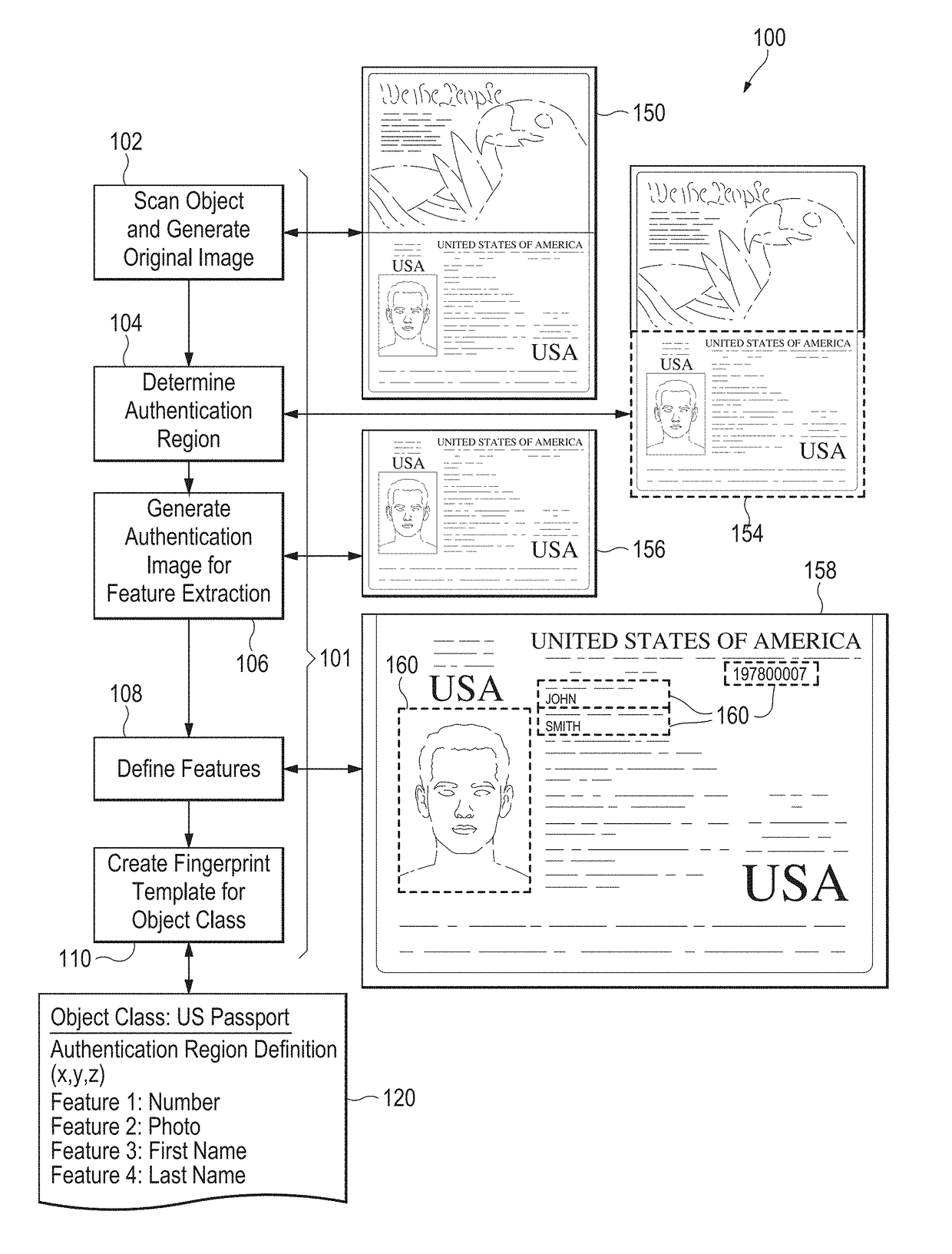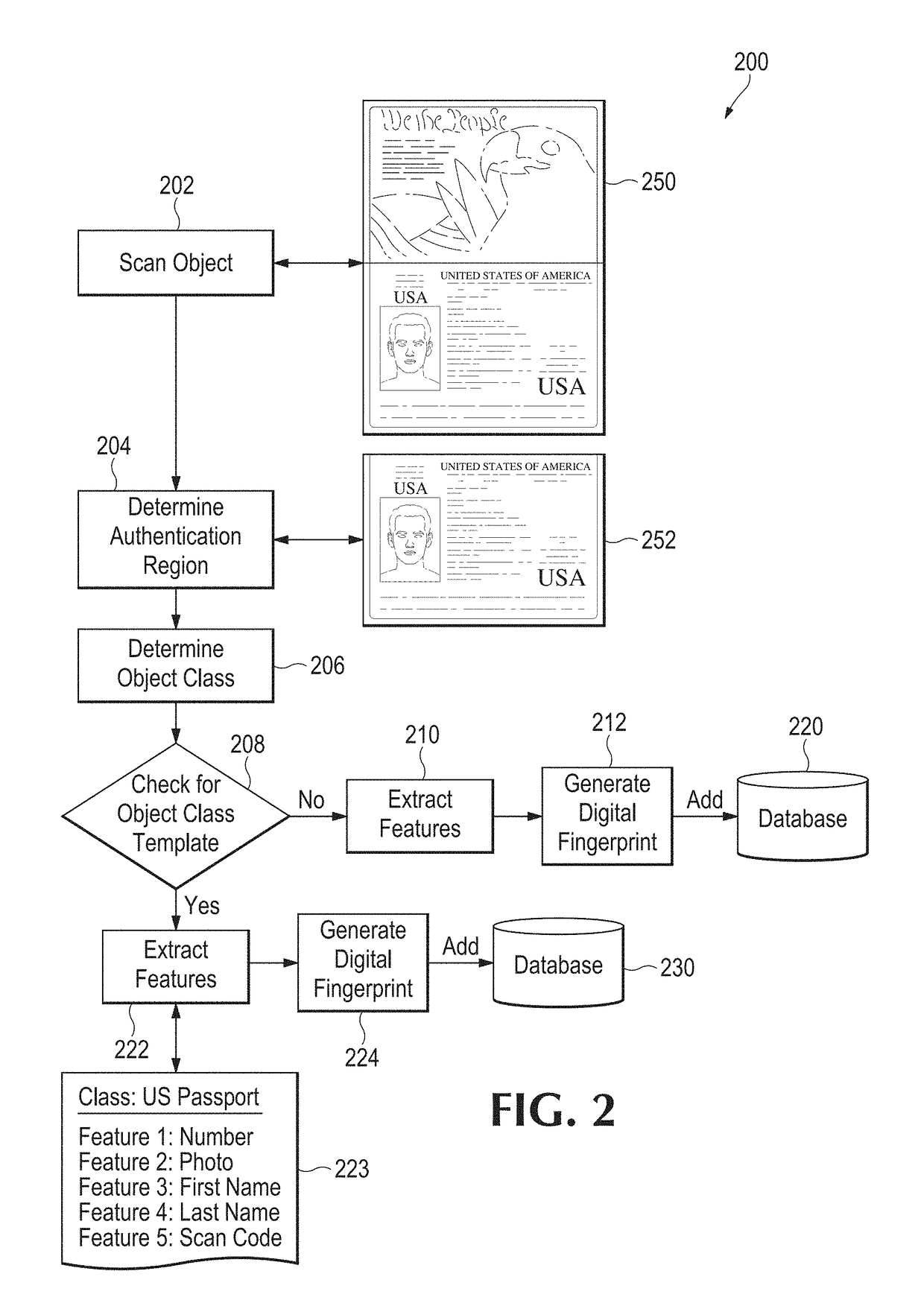Controlled authentication of physical objects
a technology of physical objects and authentication, applied in the field of central databases, to achieve the effect of high reliability, enhanced security, and rapid search
- Summary
- Abstract
- Description
- Claims
- Application Information
AI Technical Summary
Benefits of technology
Problems solved by technology
Method used
Image
Examples
example authentication
and Inspection Processes
[0080]In an embodiment, an object is scanned and an image is generated. The steps that follow depend on the operation to be performed. Several illustrative example cases are discussed below.
[0081]Case 1: For authentication of a previously fingerprinted object, the following steps may be followed (see FIG. 3, discussed below):[0082]1. One or more authentication regions are either determined automatically by a system, or by utilizing the authentication region definitions stored in a fingerprint template.[0083]2. Relevant features are extracted from each authentication region and a digital fingerprint is created. Feature extractions preferably will be in the form of feature vectors, but other data structures may be used as appropriate.[0084]3. Optionally, a unique identifier such as a serial number may be extracted and stored to augment subsequent search and identification functions.[0085]4. The digital fingerprint of the object to be authenticated is compared t...
PUM
 Login to View More
Login to View More Abstract
Description
Claims
Application Information
 Login to View More
Login to View More - R&D
- Intellectual Property
- Life Sciences
- Materials
- Tech Scout
- Unparalleled Data Quality
- Higher Quality Content
- 60% Fewer Hallucinations
Browse by: Latest US Patents, China's latest patents, Technical Efficacy Thesaurus, Application Domain, Technology Topic, Popular Technical Reports.
© 2025 PatSnap. All rights reserved.Legal|Privacy policy|Modern Slavery Act Transparency Statement|Sitemap|About US| Contact US: help@patsnap.com



